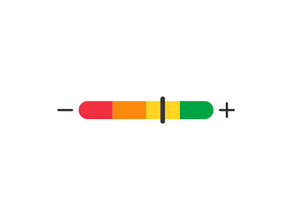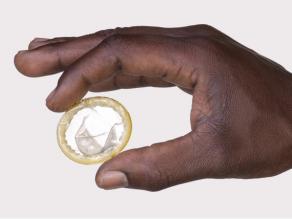Anticonceptiepleister
De anticonceptiepleister is een anticonceptiemiddel.
De anticonceptiepleister is een dunne, lichtbruine of doorschijnende kleefpleister. Het bevat dezelfde 2 hormonen als de pil. Deze hormonen voorkomen de eisprong. De hormonen maken het ook moelijker voor de zaadcellen om door het slijmvlies van de baarmoederhals te geraken. De zaadcellen komen dan moeilijk in de baarmoeder, waar de eicel zit. De hormonen bemoeilijken ook de innesteling van een eicel.
Hoe een anticonceptiepleister gebruiken
Breng de anticonceptiepleister als volgt aan:
- Scheur de verpakking open aan de inkeping.
- Open de verpakking.
- Trek de pleister samen met de plastic folie van de verpakking.
- Verwijder de helft van de plastic folie.
- Breng de pleister aan op uw onderbuik, bil, rug, schouderblad of aan de buitenkant van uw bovenarm op droge, schone huid. Zorg ervoor dat u op of rond de pleister geen crème, olie, lotion, poeder of make-up gebruikt.
- Breng de klevende kant van de pleister op uw huid aan en verwijder de andere helft van de plastic folie. Duw de pleister stevig tegen uw huid.
- Draag de pleister 7 dagen (1 week). Verwijder de pleister.
- Breng in de 2de en 3de week een nieuwe pleister aan op dezelfde dag van de week (bijvoorbeeld woensdag);
- In de 4de week gebruikt u geen pleister. Deze week zal u beginnen bloed te verliezen (menstruatie). U bent deze week ook beschermd.
- Na 7 dagen (1 week) brengt u een nieuwe pleister aan op dezelfde dag van de week (bijvoorbeeld woensdag), ook als u nog bloedt.
- Herhaal de vorige stappen.
Betrouwbaar
De anticonceptiepleister is betrouwbaar, als hij correct wordt gebruikt. De pleister is niet, of minder, betrouwbaar als:
- U bepaalde medicijnen neemt, zoals Sint-Janskruid. Zeg tegen uw dokter dat u de anticonceptiepleister gebruikt. Dan kan hij daar rekening mee houden bij het voorschrijven van medicijnen.
- U de pleister vergeet aan te brengen na de onderbreking van 7 dagen. Of als u de pleister vergeet te vervangen;
- U de pleister verliest en geen nieuwe aanbrengt binnen 24 uur (1 dag).
- U 90 kilo of meer weegt.
Ongeveer 9 op 100 vrouwen worden zwanger wanneer ze de anticonceptiepleister 1 jaar lang gebruiken.
Geen invloed op uw gezondheid
De anticonceptiepleister bevat hormonen. Deze hormonen hebben over het algemeen geen invloed op uw gezondheid. Maar in sommige gevallen is het beter om een ander anticonceptiemiddel te kiezen. Vraag advies aan een dokter.
U wordt niet minder vruchtbaar van de anticonceptiepleister. Wanneer u zwanger wil worden, verwijdert u gewoon de pleister.
Tijdens de eerste maanden dat u de anticonceptiepleister gebruikt, kan de pleister bijwerkingen hebben zoals gespannen borsten, hoofdpijn, misselijkheid of geïrriteerde huid. Deze bijwerkingen verdwijnen meestal vanzelf. Als ze niet verdwijnen, praat erover met een dokter.
Uw menstruatie wordt vaak minder hevig en minder pijnlijk.
Geen bescherming tegen soa's en hiv
De anticonceptiepleister beschermt u niet tegen soa’s en hiv. Alleen een condoom kan u beschermen.
De anticonceptiepleister kopen
U heeft een voorschrift van een dokter nodig om de anticonceptiepleister te kopen. Zonder voorschrift kunt u de anticonceptiepleister niet kopen. U kunt de anticonceptiepleister alleen in de apotheek kopen. Vraag meer informatie aan een zorgverlener.
Sommige ziekenfondsen betalen een deel van de kosten voor anticonceptie terug. Vraag het aan uw ziekenfonds.
U betaalt ook het remgeld voor het bezoek aan de dokter. Sommige mensen hebben recht op verhoogde tegemoetkoming of dringende medische hulp. Hieronder vindt u ook adressen waar u gratis naar een dokter kunt gaan.



